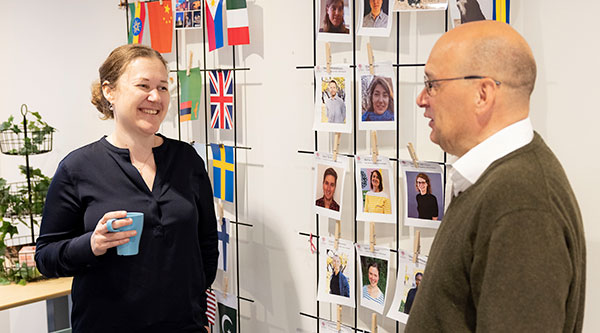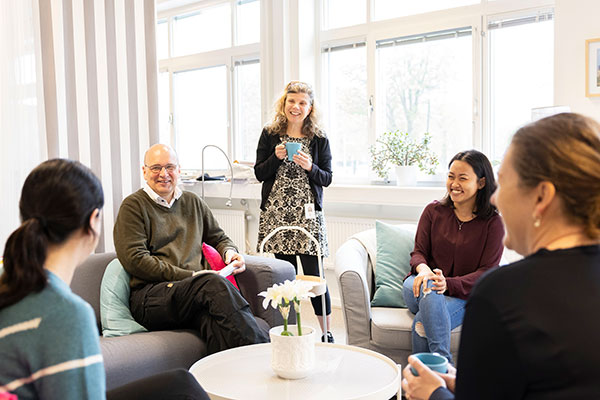
The EpiHub was established in 2018, opening new doors of collaboration for epidemiology researchers in Uppsala. One research track within epidemiology is the analysis of the incidence of diseases, referred to as descriptive epidemiology. This examines how many people have contracted a disease, and how many have died from it. Another type is etiological epidemiology, which seeks to understand the causes of disease and ill health.
“In epidemiology, we observe associations, usually without performing interventions. In the EpiHub, we try to understand the causes of diseases and how to prevent them. We also perform calculations of what effect different types of treatment and medicines can have,” explains Karl Michaëlsson, Research Director at the EpiHub.
Epidemiology – one of the pieces of the puzzle
A current example of where epidemiological tools come into play is in the ongoing vaccination against COVID-19. It is only in large-scale vaccination projects that side effects are discovered that were not detected in randomised trials of the vaccine.
“It is with the help of epidemiological instruments that we try to estimate how common the side effects are and weigh the benefit against the risk,” says Karl Michaëlsson. “Epidemiology is one piece of the puzzle, and randomised trials are another. All of the puzzle pieces are needed.”
“What’s important is that the research is done well and is of good quality. That is one of the aims of the EpiHub: to help each other and raise ourselves to a higher level,” he continues.
The methodology is often similar
A wide range of research is conducted at the EpiHub, such as the prevention of bone fractures, osteoporosis, cancer, diabetes and psychiatric disorders, as well as studies of lifestyle factors, to name just a few areas.
“Even though the research areas are different, the epidemiological methodology is often similar. That is why we can help each other at the EpiHub and give each other tips on how to solve problems,” says Karl Michaëlsson.
The break room is important
One of the researchers using the EpiHub in their diabetes research is Tove Fall, Professor at the Department of Department of Medical Sciences.

“I am so glad I took the opportunity to come to the EpiHub with my research team. It has enriched our data and benefits our processes and results,” she explains, and continues: “The best thing about the EpiHub is the exchange of ideas in this environment. Collaboration can flourish when it is this easy to meet up. The importance of this has been particularly evident during the pandemic when working from home, and I am really looking forward to hopefully being able to work on site this autumn.”
The main purpose of the EpiHub is interaction. According to Karl Michaëlsson, we need cross-border collaboration if we are to strive for excellence in research.
“I have been involved in research for 30 years, and the competition is getting fiercer. It takes more and more to get published in the top-ranked journals. To get there, we need to help each other,” says Karl Michaëlsson.
Instead of reinventing the wheel in different places, you can just walk to a desk 5–10 metres away and ask how they solved the problem. For this to work, there needs to be a wide range of researchers on site, both junior and senior.
“The seasoned veterans should teach the newcomers – a transfer of knowledge or apprenticeship system. We have many whiteboards that are used extensively and we have courses and seminar series. The break room is also very important for the exchange of ideas,” says Karl Michaëlsson.
